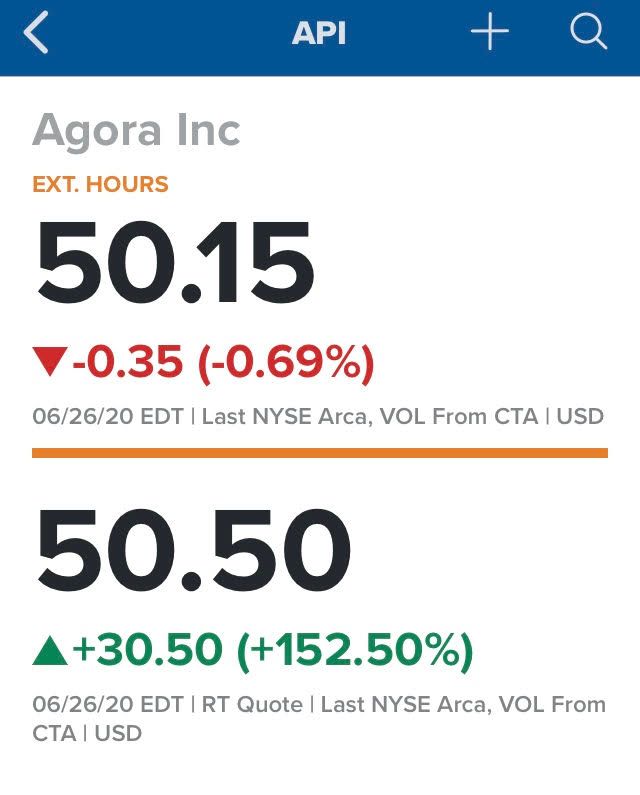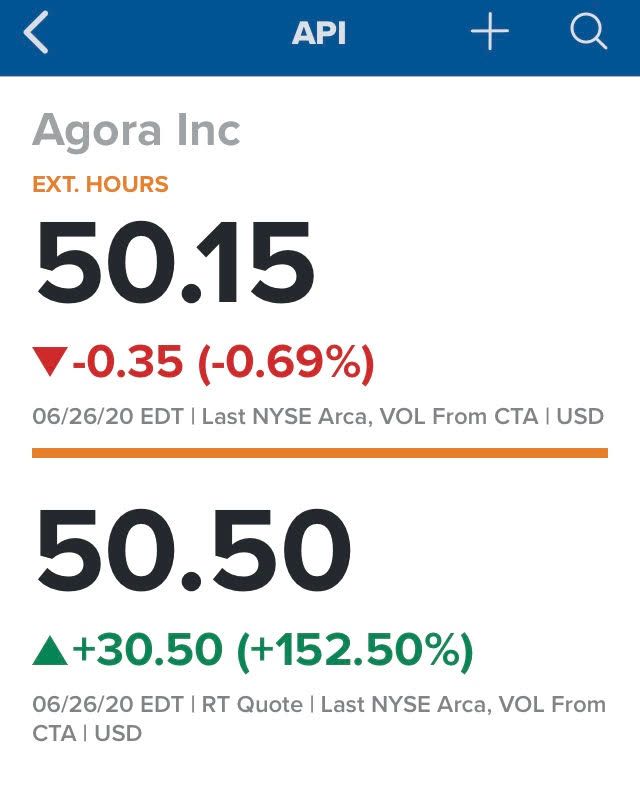Note: This issue of Interconnected Weekly covers the period between June 22-28, 2020, with six news stories – three from English language sources, three from Chinese language sources – hand-picked by your humble author to further our exploration of the interconnections between technology, business, investment, and geopolitics. All translated article titles are done by me; they are not official translations from the media outlets.
“Sino-U.S. tech race turbo-charges China chip investment, triggering bubble fear” (English Source: Reuters UK)
My Thoughts: There are three reasons why this sudden increase of private investment into China’s semiconductor industry is interesting: 1. This aligns with a larger shift in focus of the Chinese VC industry towards B2B, SaaS, cloud computing, and infrastructure technology, away from consumer sectors. Almost all the Chinese VCs made their money from betting on the hyper-growth, consumer tech industry, which is now more mature with less big opportunities. These investors also generally have less expertise in non-consumer products, not just hardware, which explains the higher valuation for these young semiconductor startups and fear of a bubble; 2. Most Chinese VCs have been shut out of the US tech scene due to the U.S.-China trade war and increase in overall tension. The U.S. still produces more high-quality startups than other countries, this increase in investment is partially due to necessity, not choice; 3. The origin of the venture capital industry was rooted in betting on the first generation of semiconductor companies in Silicon Valley. In a fascinating twist of history, the venture capital trade is returning to its roots but in China, while American VCs generally still shun hardware and prefer software.
“India’s top smartphone maker Xiaomi says growing anti-China sentiment has not affected business” (English Source: CNBC)
My Thoughts: Xiaomi looks smart here for both manufacturing and selling its smartphones in India, which I noted in a previous article “Is Leaving the China Supply Chain a Pipe Dream?”, thus its claim of “Made in India” in front of its stores is at least believable. Fully localizing its leadership team in India also helps -- a company-building practice that’s worth modeling for any company looking to expand into a new country. But it’s too early to know how the China-India border conflict, something that was noted in the very first issue of Interconnected Weekly with the “Remove Chinese Apps” app, will impact tech, business, and the geopolitics of the APAC region. The proposed tariffs of Chinese goods going to India likely won’t amount to much, because India has much less leverage over China than say the U.S. with its tariffs. However, this will further strengthen Indian Prime Minister Narendra Modi’s brand of Hindu Nationalism, solidify his call for more “self-reliance” (just like China), and potentially lead to a tighter U.S.-India alliance against China, especially if Trump wins re-election (remember #HowdyModi?)
“The Facial Recognition and Biometric Technology Moratorium Act” (English Source: Senator Ed Markey Press Office)
My Thoughts: Instead of linking to a news report about this proposed legislation in the U.S., I linked directly to the original announcement, because it’s alway interesting to read how legislators position themselves when they propose a bill. From a legislative process angle, this bill is interesting because it’s a simultaneous, bicameral proposal, by two Senators and two House of Representatives; typically, a bill starts in either one or the other chamber, not both at the same time. From a technology angle, this proposal comes during an intense period of public protests and discussion around police brutality and racial justice, and on the heels of Amazon, IBM, and Microsoft all halting the sales of their facial recognition technology to police departments. And from a government structure angle, one of the elements of the Act is to “allow states and localities to enact their own laws regarding the use of facial recognition and biometric technologies.” But earlier this week, the city of Santa Cruz in California already banned the use of AI algorithms and facial recognition from its local policing practices. In the U.S., how policing is practiced in real life is mostly dictated by local governments; the U.S. Congress, while powerful, has comparatively little influence.
“Not losing on GPS! 30 Satellites in place!” (Chinese Source: Pengpai News)
My thoughts: The successful launch and orbiting of the 30th Beidou satellite is no doubt a BFD; the news is covered in western media as well. With all the heated discussions about the incoming decoupling between the U.S. and China, this most tangible example of decoupling the two countries’ GPS system began well over two decades ago. The national pride that emanates from the event is undeniable, as the exclamation marks of the article title show. Two technical elements of the Beidou GPS system that are worth noting: 1. The system allows messages to be up to 1200 Chinese characters long, compared to the 120 character limitation from the previous generation of Beidou GPS. (That’s about 8.5 tweets, since each Chinese character counts as two characters on Twitter.); 2. The system possesses enhanced capabilities that allow “relevant parties” to locate users, not just for users to locate themselves. This enhanced power is presented as a big plus for future search and rescue missions and already applied to industries, like fishing. Of course, the flip side of this coin is more surveillance and tracking capabilities of any one who uses the Beidou GPS system.
“Matlab is banned, CAD is also in danger; How can domestic industrial software have a breakthrough?” (Chinese Source: CSDN)
My thoughts: The recent prohibition of MATLAB usage in the Chinese universities listed on the U.S. export control entity list has definitely touched a nerve in the Chinese technology community, while receiving relatively little attention in American media. This article expands on the vulnerability of China’s technology reliance to not only MATLAB, but also CAD (computer-aided design) tools and especially EDA (Electronic design automation) tools, which are critical to the semiconductor manufacturing process. According to the article, 95% of the EDA suppliers in China are foreign companies, e.g. Synopsys, Cadence, Siemens, Ansys; domestic companies’ products barely register. The commentary looks for hope in open-source, which has powered some home-grown technologies in the IT infrastructure space, e.g. TencentOS and Alibaba’s own microprocessor based on the open source instruction-set architecture, RISC-V. But pinning China’s self-reliance on an open-source EDA, which currently does not exist, feels like grasping at straws.
“Agora successfully lands on NASDAQ: first share traded of the ‘real-time engagement cloud’” (Chinese Source: iponews)
My thoughts: Dubbed by some people in tech as the “Twilio of China”, Agora’s IPO on the NASDAQ serves as quite the counterexample to all the narratives about the impending decoupling of the U.S.-China technology community and capital markets. (Also, kudos to Agora for snagging arguably the best stock ticker symbol, API, of the 21st century economy.) Its stock popped 150% on its first day of trading, and seeing a big first-day pop always reminds me of a quote from Box CEO Aaron Levie:
“IPOs: If your stock shoots up, you left money on the table. If it drops, you screwed investors. If it's flat, you're boring.”

From a solely fundraising perspective, Agora certainly left money on the table. (And by the way, so did it’s American doppelganger Twilio, whose stock rose 90% on its first day.) However, for a Chinese tech company to go public during this precarious time is an accomplishment, pure and simple. While regulatory risks like the pending Holding Foreign Companies Accountable Act and delisting are always present, companies like Agora, Dada (IPO’ed on the NASDAQ in early June), and Beike (about to IPO in New York in the coming weeks), clearly see these risks as worth taking, in order to access the American capital market.
If you like what you've read, please SUBSCRIBE to the Interconnected email list. New posts will be delivered to your inbox (twice per week). Follow and interact with me on: Twitter, LinkedIn.
注:本期《每周互联》总结概括的时间段是:2020年6月22至28日,包括本作者挑选的六条新闻:三条原文是英文,三条原文是中文,来帮助我们继续探索科技、商业、投资和地缘政治之间的相互联系。所有翻译的文章标题都是我做的翻译,不是媒体来源的官方翻译。
“中美科技竞赛加速国内芯片产业投资,引发市场泡沫恐慌”(英文来源: 路透社-英国版)
我的想法:这条新闻有三点很有意思:1. 这与国内风投行业总体向B2B、SaaS、云计算和基础设施技术等领域转移视线相吻合。几乎所有国内风投目前赚到的钱都是从投资高速增长的to C科技产品来的,但已经开始成熟,未来机会变小。这些投资者在非to C产品方面的专业知识较少,而且不仅限于硬件,因此也部份解释了这些年轻的半导体初创公司能拿到高价估值的背后原因,并引起行业担心出现泡沫;2. 由于中美贸易战以及整体局势日益紧张,多数国内风投已被挤出美国科技领域。从美国起家的高质量创业公司的数量仍然高于其他国家,所以国内风投重金投资国产企业部分理由也是没办法,并非是情愿的选择。3. 风险投资行业的起源是押注硅谷第一代半导体公司。在这个有点讽刺味道的历史转折点中,风险投资正在回归其根源,但是发生在中国,而绝大部分的美国风投目前却仍然回避硬件,偏好软件产品。
“印度最大的智能手机制造商小米表示,反华情绪并未影响业务”(英文来源: CNBC)
我的想法:小米在印度本土制造和销售智能手机的做法看起来很明智,我在之前的一篇文章 “离开中国供应链是天方夜谭吗?”中也提到了这一点。因此,它在门店前宣称“印度制造”的口号至少都是可信的。将其领导团队完全本地化在印度也有帮助;这种公司管理做法是一个任何希望去他国开拓新市场的公司都值得借鉴的做法。但现在对中印边境冲会如何影响亚太地区的科技、商业和地缘政治下结论还为时过早。这点在《互联周刊》(Interconnected Weekly)的第一期的“删除中国应用程序”(Remove Chinese Apps)那条新闻中也提到过。印度政府正在拟议的对中国商品的关税可能不会对印度有多大帮助,因为目前印度的体量对中国经济的影响力远低于美国,所以关税的影响不能对应。然而,从长远角度来看,目前的趋势将进一步强化印度总理莫迪提倡的大印度民族主义,巩固他对印度“自力更生”的呼吁(与中国类似),并有可能导致美印携手加强对中国的遏制,特别是如果特朗普连任成功(大家还记得莫迪访问美国时走红的 #HowdyModi口号吗?)。
“面部识别和生物识别技术暂停法案”(英文来源: Ed Markey参议员新闻部)
我的想法: 我特意没有链接有关这条法案提议的新闻报道,而是直接链接参议员新闻部的官宣,因为读一下立法者在提出法案时怎么表达自己的立场和站位其实很有意思。从立法流程的角度来看,这项法案有点不同,因为它是由两名参议员和两名众议院成员同时提出的;通常,一项法案是在两院的其中一个先开始,而很少同时开始。从技术角度来看,这项提议是在美国公众近期围绕警察暴力和系统种族歧视展开的激烈抗议和讨论期间提出的,紧随亚马逊、IBM和微软都宣布停止向警察部门销售自己的面部识别技术。从政府结构的角度来看,该法案的其中一条内容是“允许州政府和地方政府关于使用面部识别和生物识别技术问题自己立法的权利”。但本周初,加州城市Santa Cruz已经禁止当地警察局使用人工智能算法和面部识别技术来保护公共安全。在美国,警察日常的做法和做为主要由地方政府管制;美国国会虽然权利很大,但在这个问题上的影响力其实没那么大。
“不输GPS!30颗卫星全部就位!” (中文来源: 澎湃新闻)
我的想法: 第30颗北斗卫星的成功发射和入轨,无疑是一件很nb的大事,西方媒体也报道了这一消息。虽然关于中美各种脱钩的热论这两年很多,但这一最切实的脱钩例子早在20多年前就开始了。正如文章标题的多个感叹号所示,这件事所产生的民族自豪感是不可否认的。北斗GPS系统的两个技术特点值得注意:1. 与上一代北斗GPS的120个字限制相比,该系统允许信息长达1200个字。(这大约是八个半条tweets,因为每个汉字在Twitter上算两个字符。);2。该系统的新能力之一,会更有效的“相关方”定位用户,而不仅仅是帮助用户更好的定位自己。这种能力可以更好协助执行各种搜救任务,并且已经应用于渔业等行业。当然,每件“好事”都是有另一面的;使用北斗GPS系统的所有用户今后被监视和跟踪也变得更容易了。
“MATLAB 遭禁,CAD 也危险,国产工业软件如何突围?” (中文来源: AI科技大本营)
我的想法: 美国出口管制实体名单上的中国高校被禁止使用MATLAB一事,无疑触动了中国科技界,虽然美媒对此事没什么关注。此文章阐述了国内对国外技术依赖的脆弱性,即不仅限于MATLAB,还包括CAD(计算机辅助设计)工具,特别是在半导体制造过程中至关重要的EDA(电子设计自动化)工具。文章称,中国95%的EDA供应商是外国公司,如Synopsys、Cadence、Siemens、Ansys等;国内公司的产品几乎没有。文章作者对开源领域寄予希望,因为开源已经推动了IT基础设施领域的部份国产化,例如腾讯的操作系统TencentOS和阿里基于开源指令集架构(Instruction Set Architecture,ISA)RISC-V做出来的微处理器。但将中国科技自主的未来寄托在一个目前还不存在的开源EDA上,感觉不是希望,更像做梦。
“声网Agora成功登陆纳斯达克:成实时互动云第一股” (中文来源: 独角兽早知道)
我的想法: 被许多科技人士称为是“中国的Twilio”的声网Agora本周在NASDAQ成功IPO,对所有关于中美科技界和资本市场各种脱钩的舆论唱了个反调。(借此机会也赞赏一下Agora团队注册到了21世纪经济最好的股票代码,API。)股票上市第一天暴涨了150%,而每看到上市公司首日暴涨我总是会想起Box CEO Aaron Levie的一句名言:
“IPO:如果你的股票暴涨,你就把该是你的钱留在了桌上。如果它跌了,你就坑了投资人。如果没涨也没跌,你就很无聊。IPOs: If your stock shoots up, you left money on the table. If it drops, you screwed investors. If it's flat, you're boring.”

仅从集资角度来看,声网确实把些该属于它的钱留在了桌上。(Twilio当时上市也是如此,股价第一天涨了90%。)然而,对于一家中国科技公司来说,在这个不稳定的时期能在美国成功上市就是个成就,没什么好说的。虽然监管风险,如可能变成法律的《外国公司责任追究法》,和退的可能总会存在,但对像声网,达达(6月初在NASDAQ上市)和贝壳(即将在纽约上市)等公司来说,为了能接触到美国资本市场,承担这些风险显然是值得的。
如果您喜欢所读的内容,请用email订阅加入“互联”。每周两次,新的文章将会直接送达您的邮箱。请在Twitter、LinkedIn上给个follow,与我交流互动!
